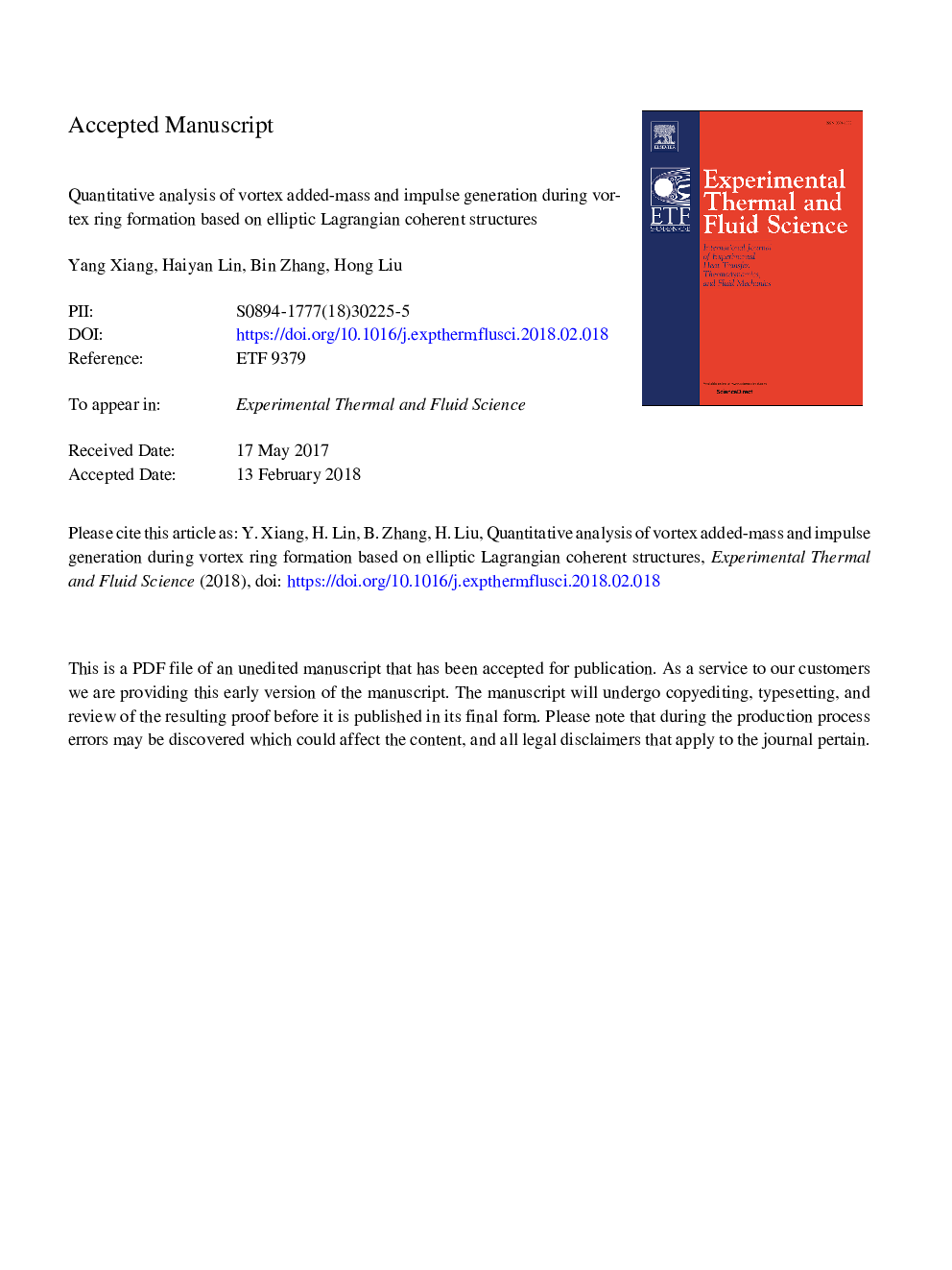| Article ID | Journal | Published Year | Pages | File Type |
|---|---|---|---|---|
| 7051768 | Experimental Thermal and Fluid Science | 2018 | 32 Pages |
Abstract
In many propulsive systems operating with the generation of large-scale vortices, the enhanced performance is achieved and closely related with the effects of vortex added-mass. However, quantitatively analysing vortex added-mass is difficult, particularly when the vortex is significantly deforming, because identifying a physical vortex boundary is difficult. Recently, a physical vortex boundary is defined by the elliptic Lagrangian coherent structures (LCSs), which are sought as closed stationary curves of the averaged Lagrangian strain. In this study, a canonical vortex-ring flow is investigated to analyze the evolution of vortex added-mass by examining the evolution of elliptic LCSs. A vortex ring is produced experimentally by employing a piston-cylinder apparatus, and the time-dependent flow fields are recorded by particle image velocimetry technique. Elliptic LCSs are computed with high-precision algorithms. Compared with the streamline pattern and ridges of the finite-time Lyapunov exponent, elliptic LCSs can more precisely and quantitatively determine a vortex boundary that acts as a material surface in fluids. In terms of elliptic LCSs, vortex added-mass coefficient is computed and demonstrates a decreasing tendency from approximately 1.3-0.88 during vortex ring formation. Correspondingly, the overpressure contribution to the vortex impulse exhibits the same decreasing tendency with the vortex added-mass coefficient, because the production of overpressure is largely owing to the effects of vortex added-mass. Actually, elliptic LCSs have provided us a powerful tool to determine the vortex added-mass coefficient. In addition, a potential implication of these results is that elliptic LCSs can be used to estimate instantaneous force based on vortex momentum and vortex added-mass.
Keywords
Related Topics
Physical Sciences and Engineering
Chemical Engineering
Fluid Flow and Transfer Processes
Authors
Yang Xiang, Haiyan Lin, Bin Zhang, Hong Liu,
